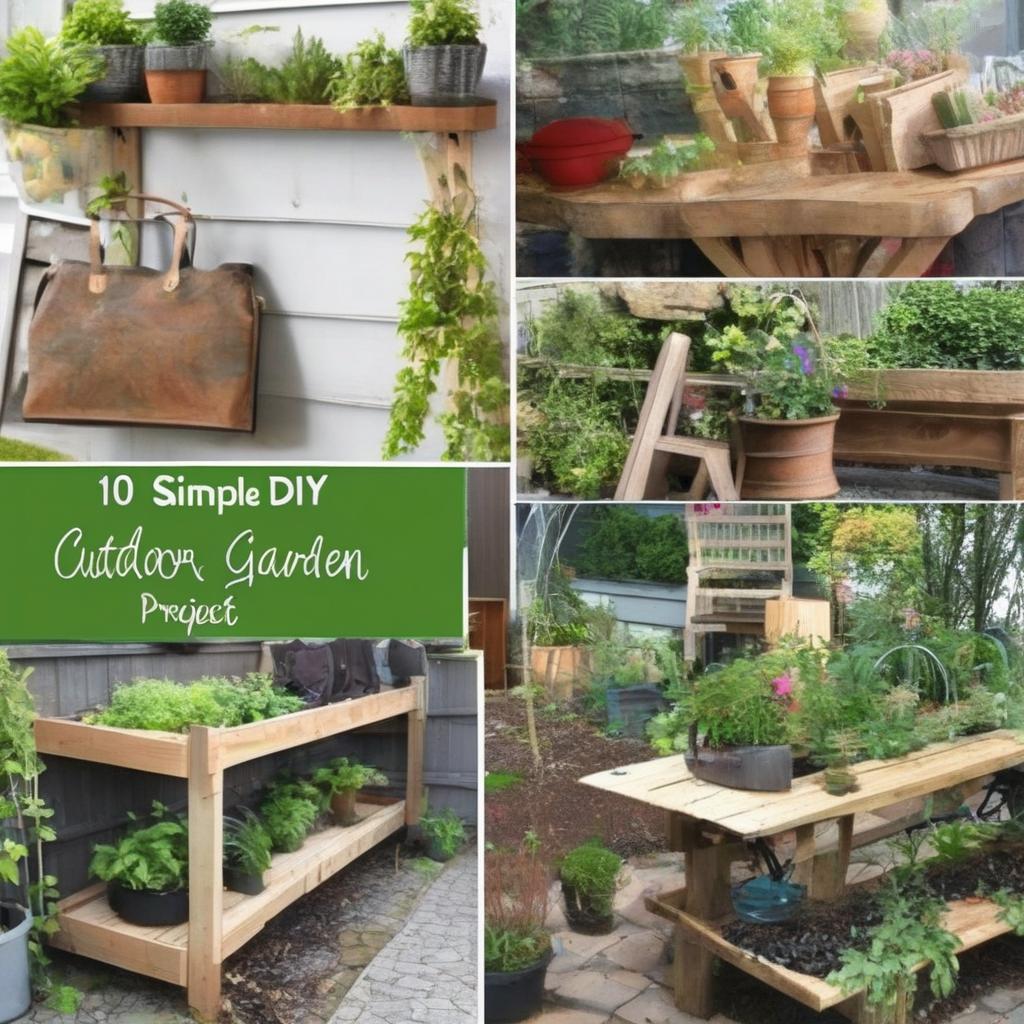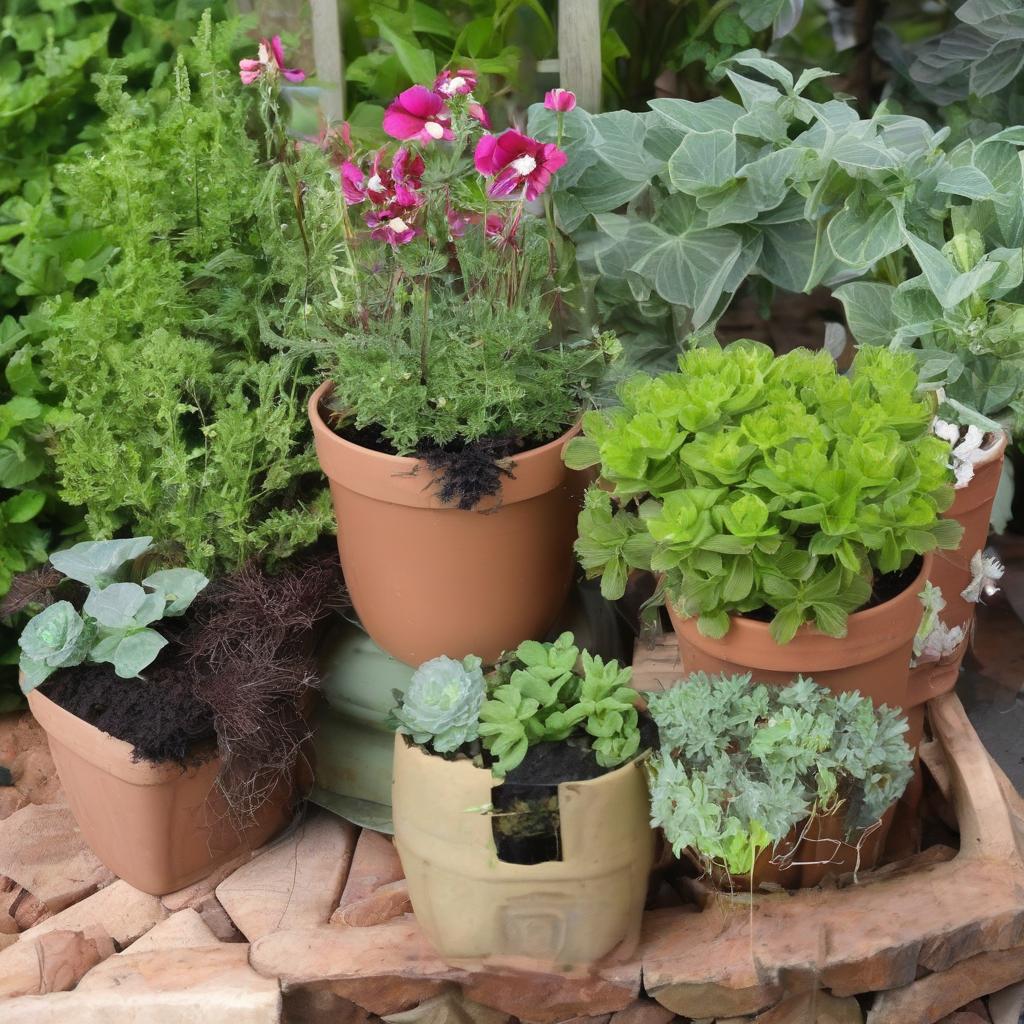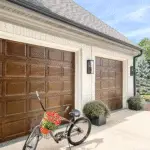
DIY Garden Projects: Building a Raised Bed for a Bountiful Harvest
Gardening is a rewarding hobby that provides an opportunity to connect with nature, grow your own food, and enjoy the therapeutic benefits of nurturing living plants. However, traditional gardening methods can be backbreaking and time-consuming, especially for those with mobility issues or poor soil quality. Raised beds offer a solution to these problems, allowing you to garden with ease and efficiency. In this article, we’ll guide you through the process of building a sturdy and beautiful 4×8 raised garden bed in just an afternoon.
Benefits of Raised Beds
Raised beds have become increasingly popular among gardeners, and for good reason. They offer numerous benefits, including:
* Improved drainage: Raised beds allow excess water to drain away from the roots of your plants, reducing the risk of waterlogged soil and root rot.
* Better soil quality: Raised beds can be filled with high-quality soil, compost, and other amendments, giving your plants the best possible start in life.
* Warmer soil: Raised beds warm up faster in the spring, extending the growing season and allowing you to plant earlier.
* Increased accessibility: Raised beds are typically waist-high, making it easier to plant, weed, and harvest without straining your back.
* Reduced soil compaction: Raised beds reduce the need to walk on the soil, minimizing compaction and preserving soil structure.
Materials Needed
To build a 4×8 raised garden bed, you’ll need the following materials:
* 2″ x 6″ or 2″ x 8″ lumber for the frame
* 2″ x 4″ lumber for the bottom and supports
* Wood screws
* Weather-resistant wood glue
* Wood filler (optional)
* Soil and compost for filling the bed
Tools Required
* Circular saw or hand saw for cutting lumber
* Drill for screwing the frame together
* Hammer for tapping screws into place
* Tape measure for ensuring accurate measurements
* Square for ensuring the frame is square
* Safety glasses and a dust mask for protecting yourself while sawing and drilling
Step-by-Step Instructions
Building a raised bed is a straightforward process that requires some basic carpentry skills. Follow these steps to create your own 4×8 raised garden bed:
Step 1: Cut the Frame
Cut the 2″ x 6″ or 2″ x 8″ lumber into the required lengths for the frame. For a 4×8 raised bed, you’ll need:
* Two pieces @ 8′ long (for the sides)
* Two pieces @ 4′ long (for the ends)
Step 2: Assemble the Frame
Use wood screws to attach the sides and ends together, forming a rectangular frame. Make sure the corners are square and the frame is level.
Step 3: Add the Bottom
Cut the 2″ x 4″ lumber to fit inside the frame, creating a bottom for the raised bed. Attach the bottom to the frame using wood screws.
Step 4: Add Supports
Cut additional 2″ x 4″ lumber to fit inside the bed, providing support for the soil and plants. Space the supports 12-18 inches apart, attaching them to the frame and bottom using wood screws.
Step 5: Sand and Finish
Sand the entire frame to smooth out any rough edges or splinters. If desired, apply a weather-resistant finish, such as a wood sealant or stain, to protect the wood.
Step 6: Fill with Soil and Compost
Fill the raised bed with a mix of high-quality soil and compost, ensuring the soil is level and even.
Tips and Variations
* Use recycled materials: Consider using reclaimed or recycled lumber to build your raised bed, reducing waste and adding character to your garden.
* Add a trellis: Install a trellis or other support system to help climbing plants grow upwards, maximizing space and adding visual interest.
* Incorporate irrigation: Install a drip irrigation system or soaker hose to simplify watering and reduce waste.
* Create a themed garden: Use raised beds to create a themed garden, such as a herb garden, vegetable garden, or sensory garden.
Maintaining Your Raised Bed
To ensure your raised bed remains healthy and productive, follow these maintenance tips:
* Water regularly: Raised beds dry out faster than traditional gardens, so water regularly to prevent drought stress.
* Mulch: Apply a layer of mulch to retain moisture, suppress weeds, and regulate soil temperature.
* Fertilize: Feed your plants with a balanced fertilizer, following the manufacturer’s instructions.
* Monitor for pests: Keep an eye out for pests, such as slugs and snails, and take action promptly to prevent damage.
Common Raised Bed Mistakes
While raised beds offer numerous benefits, there are some common mistakes to avoid:
* Insufficient drainage: Make sure the raised bed has adequate drainage to prevent waterlogged soil.
* Poor soil quality: Use high-quality soil and compost to ensure your plants receive the necessary nutrients.
* Inadequate support: Provide sufficient support for plants, especially those that grow tall or produce heavy fruit.
Raised Bed Design Ideas
Raised beds can be designed to suit any style or theme. Consider these ideas:
- Build a modular raised bed system, using multiple beds to create a larger garden.
- Create a tiered raised bed, using multiple levels to add visual interest and increase growing space.
- Incorporate seating into your raised bed design, creating a comfortable spot to rest and enjoy your garden.
- Use different materials, such as stone or brick, to create a unique and attractive raised bed.
Conclusion
Building a raised bed is a fun and rewarding DIY project that can be completed in just an afternoon. By following these steps and tips, you can create a sturdy and beautiful 4×8 raised garden bed that will provide a bountiful harvest for years to come. Whether you’re a seasoned gardener or just starting out, raised beds offer a low-maintenance and productive way to grow your favorite vegetables and herbs.
Raised Bed Gardening Tips for Beginners
If you’re new to raised bed gardening, here are some additional tips to get you started:
- Start small: Begin with a single raised bed and expand as you gain experience.
- Choose easy-to-grow plants: Select plants that are well-suited to raised bed gardening, such as tomatoes, peppers, and herbs.
- Learn about soil: Understand the importance of soil quality and how to maintain it.
- Water wisely: Raised beds dry out quickly, so water regularly to prevent drought stress.
By following these tips and guidelines, you’ll be well on your way to creating a thriving and productive raised bed garden that will provide years of enjoyment and fresh produce. Happy gardening! What are the benefits of using raised beds in gardening?
What are the benefits of using raised beds in gardening?
Improved drainage, better soil quality, warmer soil, increased accessibility, and reduced soil compaction.
What materials are needed to build a 4×8 raised garden bed?
2″ x6″ or2″ x8″ lumber, 2″ x4″ lumber, wood screws, weather-resistant wood glue, wood filler, soil, and compost.
What tools are required to build a raised garden bed?
Circular saw or hand saw, drill, hammer, tape measure, square, safety glasses, and a dust mask.
How do I assemble the frame of a raised garden bed?
Cut the lumber into required lengths, use wood screws to attach the sides and ends together, and ensure the corners are square and the frame is level.
How often should I water my raised bed garden?
Regularly, as raised beds dry out faster than traditional gardens.
What are some common mistakes to avoid when building a raised bed?
Insufficient drainage, poor soil quality, and inadequate support.
Can I use recycled materials to build a raised bed?
Yes, consider using reclaimed or recycled lumber to build your raised bed.
How do I maintain my raised bed garden?
Water regularly, mulch, fertilize, and monitor for pests.
What are some design ideas for raised beds?
Modular raised bed systems, tiered raised beds, incorporating seating, and using different materials like stone or brick.













